Themed collection 2022 Journal of Materials Chemistry C Most Popular Articles

Octahedral tilting in Prussian blue analogues
The trends in octahedral tilting in Prussian blue analogues are reviewed as a function of various structural factors. The link between tilting and functionality is discussed.
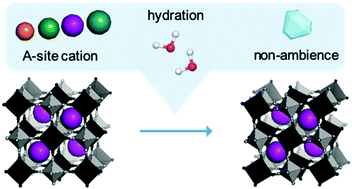
J. Mater. Chem. C, 2022,10, 13690-13699
https://doi.org/10.1039/D2TC00848C
Multiple-boron–nitrogen (multi-BN) doped π-conjugated systems for optoelectronics
This review covers recent advances in multiple boron–nitrogen doped π-conjugated systems including their synthetic strategies and applications in optoelectronic devices.
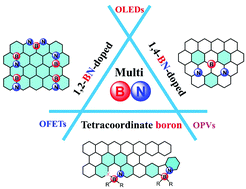
J. Mater. Chem. C, 2022,10, 13499-13532
https://doi.org/10.1039/D2TC01106A
Transparent stretchable hydrogel sensors: materials, design and applications
Illustration of strain-, pressure-, temperature-, humidity- and gas sensor.
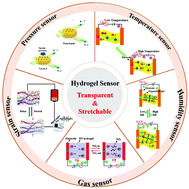
J. Mater. Chem. C, 2022,10, 13351-13371
https://doi.org/10.1039/D2TC01104B
Synthesis, optical properties and applications of red/near-infrared carbon dots
This review article summarizes the synthesis and the fluorescence mechanism together with the most important applications in thermometry, bio-imaging, LSCs and photocatalysis of red/near-infrared C-dots.
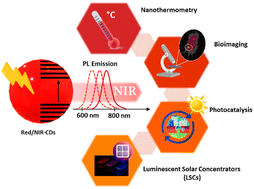
J. Mater. Chem. C, 2022,10, 11827-11847
https://doi.org/10.1039/D2TC02044K
TADF: Enabling luminescent copper(I) coordination compounds for light-emitting electrochemical cells
In this review, we illustrate how the field of luminescent copper(I) compounds has developed with a focus on ionic copper(I) complexes and those exhibiting thermally-activated delayed fluorescence (TADF).
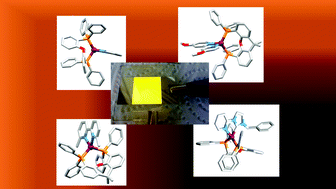
J. Mater. Chem. C, 2022,10, 4456-4482
https://doi.org/10.1039/D1TC04028F
The effect of side chain engineering on conjugated polymers in organic electrochemical transistors for bioelectronic applications
The versatile synthetic side chain toolbox assists in tuning the OECT parameters by controlling material properties of organic mixed conductors. In this review we critically summarise and evaluate various side chains used throughout OECT materials.
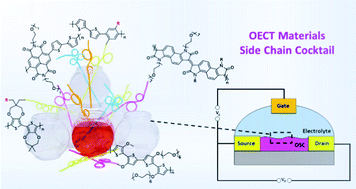
J. Mater. Chem. C, 2022,10, 2314-2332
https://doi.org/10.1039/D1TC05229B
Modulating up-conversion and non-radiative deactivation to achieve efficient red thermally activated delayed fluorescence emitters
Improving up-conversion and suppressing non-radiative inactivation by employing the novel dibenzothioxanthene acceptor and employing a bulky donor is demonstrated as a new perspective toward highly efficient red organic light-emitting diodes.
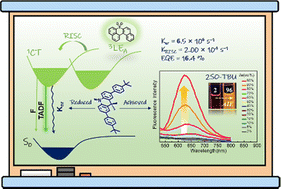
J. Mater. Chem. C, 2022,10, 17053-17058
https://doi.org/10.1039/D2TC04138C
Equilibrating the key parameters of thermally activated delayed fluorescence emitters towards efficient red/near-infrared OLEDs
Precisely regulating the key parameters associated with the thermally activated delayed fluorescence process is accomplished with optimized π-bridges or end-groups, affording improved maximum external quantum efficiencies of 18.9% (@630 nm).
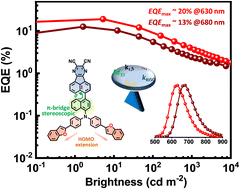
J. Mater. Chem. C, 2022,10, 17059-17065
https://doi.org/10.1039/D2TC03933H
Purely organic Vis-to-UV upconversion with an excited annihilator singlet beyond 4 eV
Biphenyl at its best: a (triisopropylsilyl)ethynyl group in para position converts biphenyl into a UV annihilator that is successfully employed for blue-to-UV upconversion with unprecedented output photon energies.
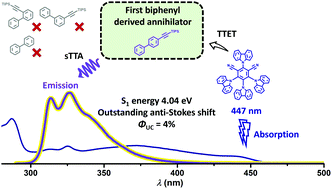
J. Mater. Chem. C, 2022,10, 4568-4573
https://doi.org/10.1039/D1TC04782E
Multifunctional photoresponsive organic molecule for electric field sensing and modulation
A multifunctional nonlinear organic molecular device is designed and demonstrated for electric field sensing and modulating. The molecule consists of a TPE-derived module connected by an alkyl chain to an NAI-derived module.
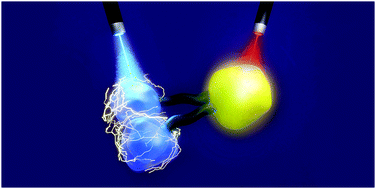
J. Mater. Chem. C, 2022,10, 1204-1211
https://doi.org/10.1039/D1TC05065F
Taking a closer look – how the microstructure of Dion–Jacobson perovskites governs their photophysics
Films of the two-dimensional Dion–Jacobson compound PDMAPbI4 are studied through concerted multimodal microscopy. Hyperspectral Raman and PL imaging underline the complex impact of the microstructure, composition, and orientation on the photophysics.
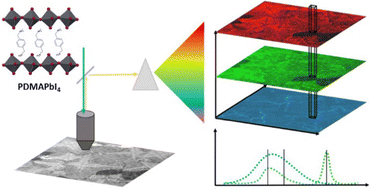
J. Mater. Chem. C, 2022,10, 17539-17549
https://doi.org/10.1039/D2TC04406D
Ultralong room-temperature phosphorescence from polycyclic aromatic hydrocarbons by accelerating intersystem crossing within a rigid polymer network
A water-resistance polymer-based room temperature phosphorescence material (RTP) with an ultralong lifetime and afterglow was achieved by doping PAHs within a rigid polymeric network during in situ polymerization.
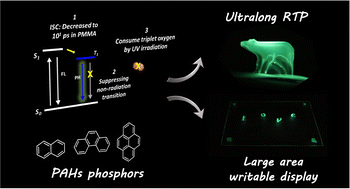
J. Mater. Chem. C, 2022,10, 17620-17627
https://doi.org/10.1039/D2TC02557D
Local chemical origin of ferroelectric behavior in wurtzite nitrides
Combinatorial Al1−xScxN library decouples composition, crystal structure, and ferroelectric properties. The local chemical bonding is the key factor to control ferroelectric properties rather than extended crystal structure.
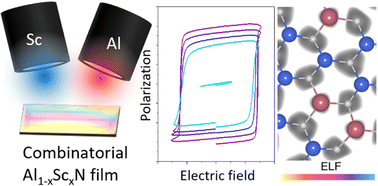
J. Mater. Chem. C, 2022,10, 17557-17566
https://doi.org/10.1039/D2TC02682A
Well-defined electrochemical switching of amphiphilic glycolated poly(3,4-ethylenedioxythiophene)
The archetypical conducting polymer poly(3,4-ethylenedioxythiophene) can be equipped with a glycol side-chain, which favorably tunes its electrochemical properties and opens new processability options.

J. Mater. Chem. C, 2022,10, 17208-17215
https://doi.org/10.1039/D2TC01448C
Triplet transfer from PbS quantum dots to tetracene ligands: is faster always better?
We report the triplet energy transfer from PbS QDs to four energetically and structurally similar tetracene ligands, even with similar ligands we find that the triplet energy transfer dynamics can vary significantly.

J. Mater. Chem. C, 2022,10, 16321-16329
https://doi.org/10.1039/D2TC03470K
Green light-emitting electrochemical cells based on platinum(II) complexes with a carbazole-appended carbene ligand
Cyclometallated N-heterocyclic carbenes with an appended carbazole and chelating diphosphines brought together to achieve the first simple solution-processed green-emitting iTMC-LECs based on mononuclear Pt(II) complexes.
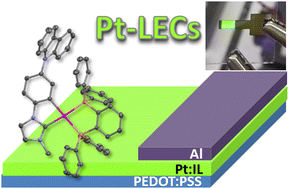
J. Mater. Chem. C, 2022,10, 15491-15500
https://doi.org/10.1039/D2TC02539F
Luminescent chiral triangular prisms capable of forming double helices for detecting traces of acids and anion recognition
We synthesized a pair of tetraphenylethylene-based enantiomeric (R)- and (S)-Δ which form double helices. Acid-responsive luminescence of both triangles enables them detecting traces of acids in organic solvents such as CDCl3, CH2Cl2, CHCl3, etc.
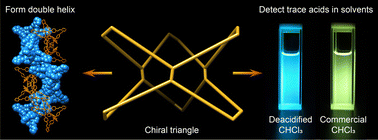
J. Mater. Chem. C, 2022,10, 15394-15399
https://doi.org/10.1039/D2TC03506E
Dithia[9]helicenes: Molecular design, surface imaging, and circularly polarized luminescence with enhanced dissymmetry factors
Synthesis of two dithia[9]helicenes by means of a LED-based double photocyclization is reported.
![Graphical abstract: Dithia[9]helicenes: Molecular design, surface imaging, and circularly polarized luminescence with enhanced dissymmetry factors](/en/Image/Get?imageInfo.ImageType=GA&imageInfo.ImageIdentifier.ManuscriptID=D2TC02910C&imageInfo.ImageIdentifier.Year=2022)
J. Mater. Chem. C, 2022,10, 14306-14318
https://doi.org/10.1039/D2TC02910C
Rationalization and tuning of doublet emission in organic radicals
The degree of mixing of intramolecular charge transfer excitations can be used to brighten the lowest doublet excited state of TTM.
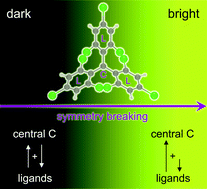
J. Mater. Chem. C, 2022,10, 13826-13833
https://doi.org/10.1039/D2TC01632J
How to calibrate luminescent crossover thermometers: a note on “quasi”-Boltzmann systems
Boltzmann or not? Most luminescent thermometers rely on a configurational crossover between two excited states with high mutual non-radiative transition rates and relative sensitivity. It is shown that these materials follow a “quasi”-Boltzmann law as is demonstrated for the case of Sm2+.
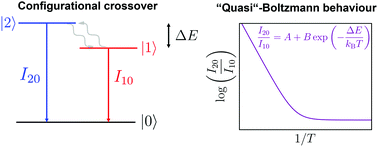
J. Mater. Chem. C, 2022,10, 13805-13814
https://doi.org/10.1039/D2TC01152B
Modulation of the intramolecular hydrogen bonding and push–pull electron effects toward realizing highly efficient organic room temperature phosphorescence
A facile design strategy based on the structural control of intramolecular hydrogen bonding and push–pull electron effects was proposed to construct highly efficient UORTP materials.
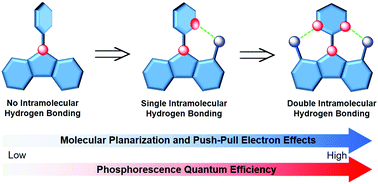
J. Mater. Chem. C, 2022,10, 13797-13804
https://doi.org/10.1039/D2TC01093C
Thermogalvanic hydrogels for self-powered temperature monitoring in extreme environments
A gel electrolyte-based thermogalvanic device with I−/I3− as a redox pair is fabricated, which shows a preferred temperature tolerance and superior anti-drying capacity. Thus, a gel-based temperature monitoring system was developed.
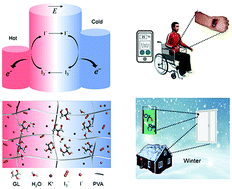
J. Mater. Chem. C, 2022,10, 13789-13796
https://doi.org/10.1039/D2TC00889K
A Zr-MOF nanoflower sensor and its mixed-matrix membrane for the highly sensitive detection of nitroaromatics
A nanoflower-like Zr metal–organic framework CJLU-1 with a 2D layered porous structure and its mixed-matrix membrane were realized as a novel sensing platform for the detection of nitroaromatics in the ppb range.
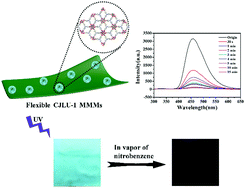
J. Mater. Chem. C, 2022,10, 7469-7475
https://doi.org/10.1039/D2TC00920J
Achieving 17.5% efficiency for polymer solar cells via a donor and acceptor layered optimization strategy
PCEs of 14.81% and 17.53% are achieved in BHJ and LbL-PSCs with PNTB6-Cl and Y6 as active layers, and DPE and DFB as solvent additives, respectively. The PCE improvement can be confirmed from the optimized crystallinity and morphology of films.

J. Mater. Chem. C, 2022,10, 5489-5496
https://doi.org/10.1039/D2TC00024E
Novel, flexible, and transparent thin film polyimide aerogels with enhanced thermal insulation and high service temperature
Due to their high service temperature, excellent thermal insulation, and nanoporous morphology, polyimide (PI) aerogels have the potential capability to be used in the next generation of microelectronic devices and flexible electronics.
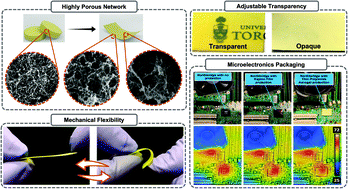
J. Mater. Chem. C, 2022,10, 5088-5108
https://doi.org/10.1039/D1TC06122D
Photoluminescence and electrochemiluminescence of thermally activated delayed fluorescence (TADF) emitters containing diphenylphosphine chalcogenide-substituted carbazole donors
We have successfully developed blue-emitting thermally activated delayed fluorescence (TADF) compounds derived from 2CzPN. They display novel electrochemiluminescence properties, these revealing correlations with measured ΔEST values.

J. Mater. Chem. C, 2022,10, 4646-4667
https://doi.org/10.1039/D1TC05696D
A deep blue thermally activated delayed fluorescence emitter: balance between charge transfer and color purity
A TADF emitter exhibiting high OLED device performance of 25% and narrow emission (FWHM = 58 nm) in the deep blue region (λem = 458 nm, CIE = 0.14, 0.13) due to balanced charge transfer interactions and locked molecular geometry.

J. Mater. Chem. C, 2022,10, 4886-4893
https://doi.org/10.1039/D1TC05027C
In optimized rubrene-based nanoparticle blends for photon upconversion, singlet energy collection outcompetes triplet-pair separation, not singlet fission
Conversion of near-infrared photons to visible light in rubrene based systems is made 20x more efficient when mixed with 0.5% wt DBP. This is not because singlet fission in rubrene is supressed, but because of reduced triplet losses.
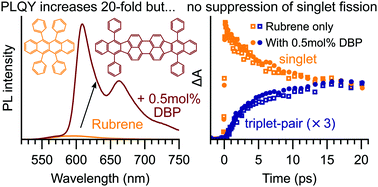
J. Mater. Chem. C, 2022,10, 4684-4696
https://doi.org/10.1039/D1TC02955J
Eu2+ emission from thermally coupled levels – new frontiers for ultrasensitive luminescence thermometry
A new strategy for noninvasive temperature probing, applying the temperature-induced configuration crossover between the thermally-coupled 6P7/2 and 5d1 levels of Eu2+ is presented.

J. Mater. Chem. C, 2022,10, 1220-1227
https://doi.org/10.1039/D1TC05022B
Intermetallic wetting enabled high resolution liquid metal patterning for 3D and flexible electronics
The intermetallic wetting between metallic liquids and solid surfaces enables a high-resolution liquid metal patterning strategy which is widely applicable for fabricating functional patterns on versatile substrates and planar/3D geometries.
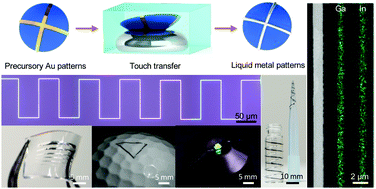
J. Mater. Chem. C, 2022,10, 921-931
https://doi.org/10.1039/D1TC04877E
Impedance spectroscopy for perovskite solar cells: characterisation, analysis, and diagnosis
Impedance spectroscopy (IS) has great potential to become a standard technique for the characterisation, analysis, and diagnosis of perovskite solar cells (PSC).
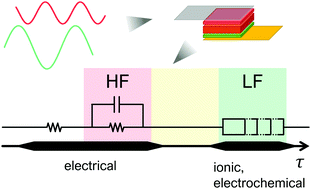
J. Mater. Chem. C, 2022,10, 742-761
https://doi.org/10.1039/D1TC04727B
About this collection
This web collection features the top 31 most cited, most downloaded or most shared articles published in Journal of Materials Chemistry C in 2022.
Congratulations to all of the authors whose articles have been featured!